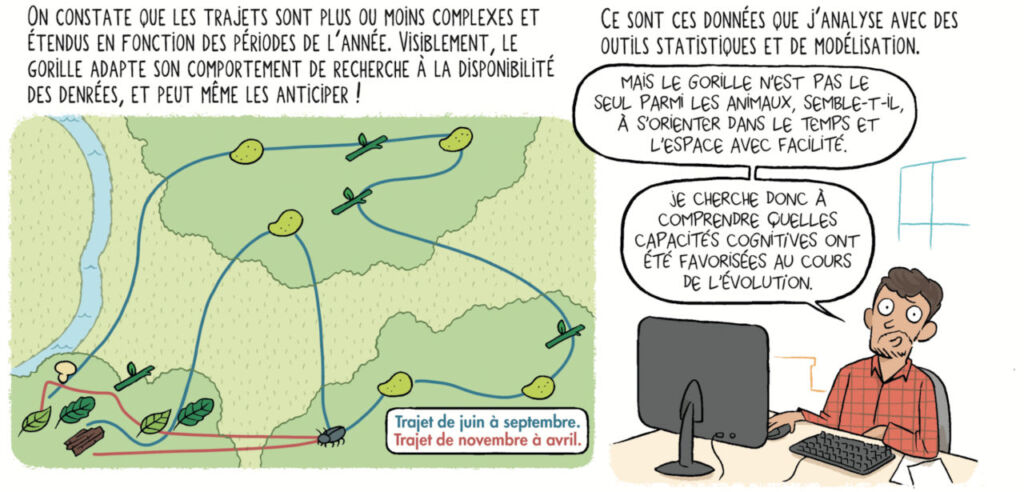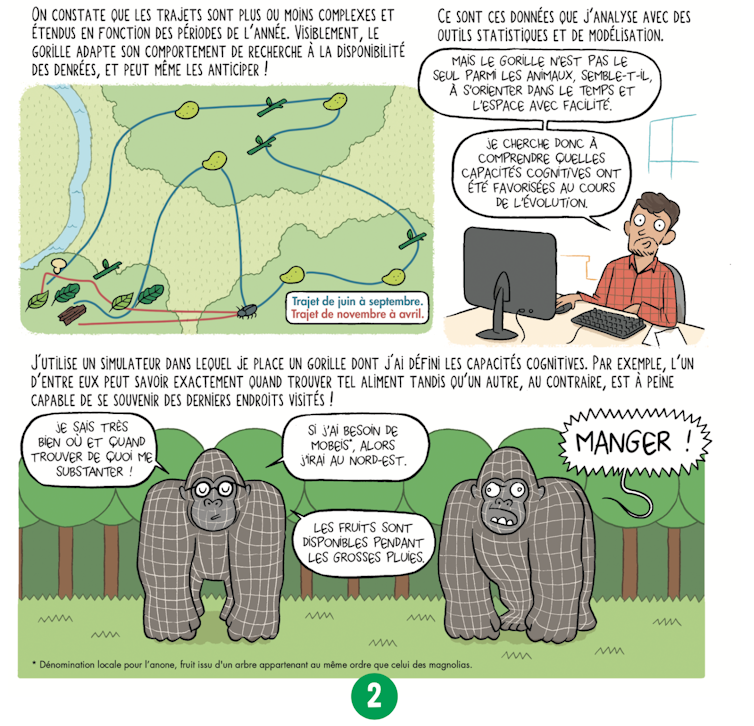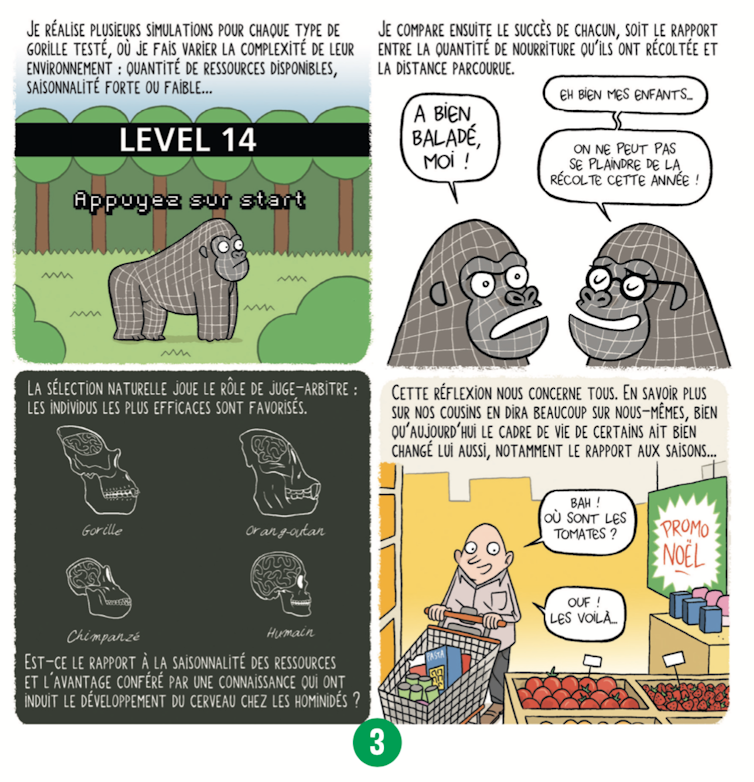Comic book "Sciences en bulles" (Science in Bubbles): Beware of the Gorilla's Memory
This excerpt from the comic book "Sciences en bulles" is published as part of the Fête de la science (Science Festival) (October 2-12, 2020 in mainland France and November 6-16 overseas and internationally), of which The Conversation France is a partner. The theme of this new edition will be: "Planet Nature?" Find all the debates and events in your region on the Fetedelascience.fr website.
Benjamin Robira, University of Montpellier


The image of a lush jungle rich in resources throughout the year is a cliché. The jungles of West Africa and the Congo Basin, home to the western lowland gorillas, actually experience marked seasonality, with periods of fruit abundance alternating with periods of scarcity.
Despite this wide variation, gorillas maintain an energy balance. This is partly due to the diversity of foods that make up their diet: leaves, flowers, fruits, mushrooms, and even insects.
But there is also speculation about its ability to correctly locate some of these foods, such as fruit, in time and space. Indeed, it is generally believed that, over the course of evolution, there have been selective pressures on individuals of species living in complex environments, where resources may be scarce and fluctuating. These pressures have favored the development of cognition, making it possible to better predict what type of food is available where and when. This would partly explain the cognitive differences observed in the animal world.
A computational approach, in which the behavior of hypothetical individuals is simulated by computer, confirms the idea of the advantage of spatial and temporal awareness.
In a variable but predictable environment such as that in which gorillas live, this ability to locate food in space and time substantially increases the success of food procurement. It also reduces the cost of searching, particularly in terms of distance traveled.
Wild groups are named after the alpha male—also known as the "silverback" due to the depigmentation of the hair on his back following puberty. Daily monitoring of these groups allows us to see whether reality matches theoretical expectations.
We can see that gorillas target specific locations when resources are available there, and move there quickly and in a linear fashion. The next step is to understand the form this spatio-temporal knowledge takes: do gorillas have a resource map ? And do they have a specific schedule in mind for the availability of each one?![]()



Benjamin Robira, Doctoral Student, University of Montpellier
This article is republished from The Conversation under a Creative Commons license. Readthe original article.